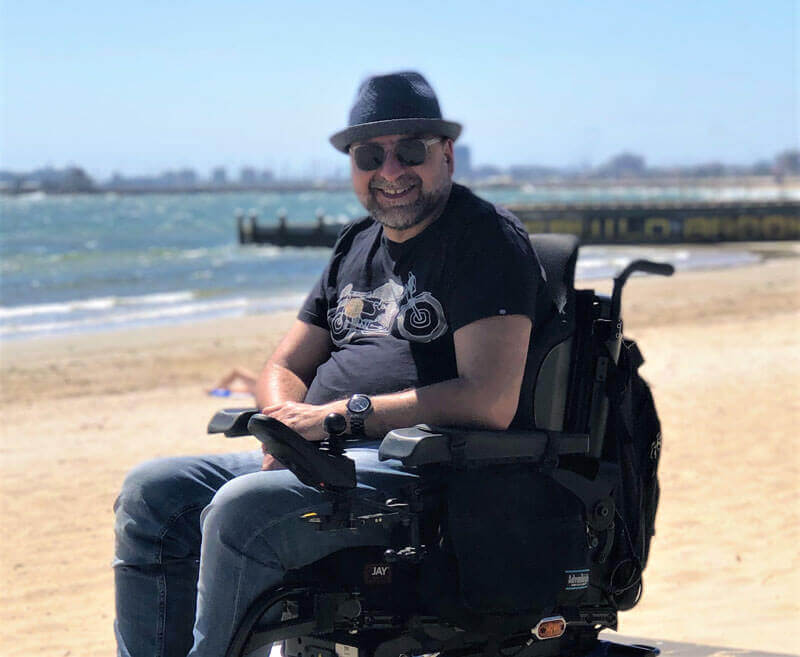Make a drive wheel choice for a power wheelchair – front, mid, rear, or hybrid – and you're potentially defining how well this chair will work for a client. It's one of the most important factors to consider, as it will impact the chair's performance over obstacles, on hills, at higher speeds, and on uneven terrain. Of course, it will also affect access at home, during transportation, and all the places that our clients want to go: school, the workplace, and into the community.
The "hybrid" in hybrid drive power chairs defines that these systems are a combination of mid-wheel drive and rear wheel drive. I usually consider the hybrid drive position for those clients who require chairs with good stability and climbing & steering control, but whose home, van, or community travel requires more maneuverability and a smaller turning radius than a typical rear wheel drive chair will provide.
Louis Ziras is a VIPP Analyst at Industry Capability Network in Melbourne, Australia who was diagnosed with multiple sclerosis (MS) about 20 years ago. He'd been using a cane and walker for his mobility, but when he was hospitalized due to an MS exacerbation, it presented a good opportunity to investigate alternate mobility offered with a power wheelchair. During his hospital stay, Louis was able to trial multiple power wheelchair models with different drive wheel positions.

Louis had pretty specific needs for his power wheelchair. He works full time, using a combination of train and wheelchair travel to get to his office, traveling nearly 6.2 miles (10 km) per day, through stations and Melbourne's busy city streets. This means his chair must have good directional control and maneuverability at high speeds, while also being able to manage the uneven surfaces and alternating terrain presented by the urban streets.
However, Louis also has to contend with tight corners into his home's bathroom & bedroom and a very busy household including a young son. These contrasting needs of good directional control with outdoor capabilities and indoor maneuverability led Louis to trial the hybrid drive wheel position. The hybrid wheel position ticked all the boxes for Louis:
"I like how it feels. It's like the chair is 'pushing me' versus 'pulling me' - and the shorter length is really helpful both at home and at work."
Louis was reluctant to get a power wheelchair six years ago:
"I thought the chair was going to take away my life. But it actually gave me my life back - and I'm so happy with the hybrid drive. I chose well!"
Be smart like Louis: trialing multiple power wheelchairs with different drive wheel positions is a valuable investment. As we know, our clients are individuals and their wheelchairs need to reflect their needs and goals.
Amy Bjornson
BS, MPT, ATP, SMS - Clinical Education Manager, Asia-Pacific